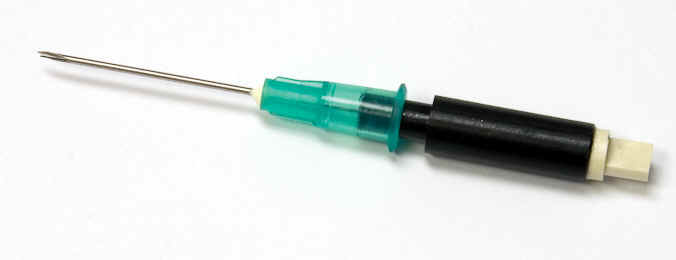ISO-HPO-100
過氧化氫感應器-100um
|
 |
|
Sensing Hydrogen Peroxide Hydrogen Peroxide is produced in biological systems by controlled pathways at low concentrations that impact on cell signaling. At higher concentrations inflammatory cells produce local intense amounts of this oxidant to kill pathogens. In the progress of human disease, uncontrolled formation of hydrogen peroxide from the mitochondrial respiratory chain and enzymes, such as xanthine oxidase, can occur (Prof. Victor Darley-Usmar, Univ. of Alabama, personal communication). Despite the recognized importance of this oxidant in biology real-time measurements at low concentration have been difficult. The hydrogen peroxide sensors developed by WPI are designed to compliment existing high sensitivity fluorescent approaches with direct quantitative measurement in biological samples in the low nM range. Features The ISO-HPO-100 is a 100 micron tip diameter hydrogen peroxide micro sensor designed for use in tissues and similar applications. The sensor design is based on a flexible "activated" carbon fiber sensing electrode coated with a proprietary membrane that enhances hydrogen peroxide detection. Design These sensors incorporate WPI™s proprietary combination electrode technology whereby the hydrogen peroxide sensing element and separate reference electrode are encased within a single Faraday-shielded probe design. This design has been shown to enhance performance during measurements and minimizes overall sensor size. |
|
